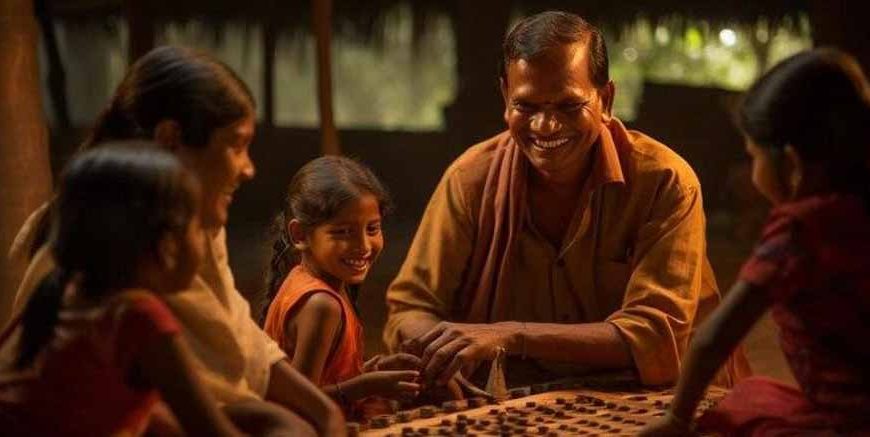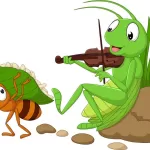India being the country of fantastic culture had many traditional games which were entertaining and educating the young generation. But these games do not only create fun and excitement, it also aids in building up different skills and values. Now it is time to immerse into the list of traditional Indian games and find out whether they could be useful for children of today.
Table of Content:
- Traditional Indian Games
- Traditional Games of India
- Importance of Indian Traditional Games
- Traditional Games of India with Names
Traditional Indian Games:
The concept of traditional Indian games makes one shift towards a pre-technological world of devices like smartphones and video game consoles. Such games were usually performed outside and children only needed a few items and they could be ready to perform. Cultural activities were from the grandparents to the parents to the children, thus conserving the cultural practices.
Some of the most popular traditional Indian games include:
- Gilli Danda
- Kho Kho
- Kabaddi
- Lagori
- Pallanguzhi
All these games have their own special set of rules and the positive impacts which we will discuss below. In fact, what is rather intriguing is how these games are still engaging today just like ages ago when it was first invented.
Traditional Games of India:
Indian traditional games are also different according to the region of India which depicts the cultural diversification of India. As you know, every state has its own games, although they usually have distinct names for the games but share close resemblance. Let’s take a virtual tour across India and discover some region-specific games:
- North India:
- South India:
- East India:
- West India:
- Central India:
In some of the states like Punjab and Haryana the children prefer playing with Pitthu Garam or the Seven Stones game. It is a game which is played with a ball and seven level stones.
The most popular form of indigenous games of Tamil Nadu is Pallanguzhi which is a board game with seeds or shells. Really, it is a very good game that would indeed highly benefit especially when helping to build the Math skills.
In West Bengal, children enjoy playing Kumir Danga (Crocodile and Land), a game similar to Tag but with a twist.
Maharashtra is known for Viti Dandu, which is similar to cricket but played with a stick and a smaller stick instead of a bat and ball.
Another game included in Madhya Pradesh is named as Langdi Tang (Hopping), in this game one leg is used and the players use this leg to touch other players.
These games reveal a vast ethnic and cultural diversification among the Indian people with the overall goals of these games being improved physical health, brain work, and cooperation.
Importance of Indian Traditional Games:
Thus, the traditional Indian games are an effective and enjoyable diversification to the Modern sedentary and computer-oriented life of children. Here’s why these games are so important:
- Physical Fitness: Many traditional games include running, jumping, or any physical activities thus ensuring that the children stick to health responsibilities.
- Mental Development: Like, Pallanguzhi and Chaupar, involves problem solving and decision-making capabilities that sharpens a person’s cognitive abilities.
- Social Skills: These games are always done in groups and thus the kids are able to learn teamwork, communication and problem solving among themselves.
- Cultural Awareness: In this case, through these games, children learn about their cultural heritage as well as gain their identity.
- Cost-Effective: As observed earlier, traditional games and toys can be played without the supplies’ need to own rather than current toys and games.
- Eco-Friendly: In most cases, these types of games incorporate natural materials or small objects with special focus on environmental conservation.
- Stress Relief: These games reduce stress since they recommend physical activity and social interaction that is crucial to emotional health.
This is an indication that besides being physical or playful in nature, these games ought to form part of the child’s activities as a way of ensuring children develop in ways beyond that which is provided by today’s entertainment.
Traditional Games of India with Names:
Now, let’s explore some specific traditional Indian games, their rules, and benefits:
- Gilli Danda:
- Kho Kho:
- Kabaddi:
- Lagori:
- Pallanguzhi:
- Hopscotch (Stapu):
- Chain (Lattoo):
Also known as Tipcat in English
Played with two sticks: a larger one (danda) and a smaller one (gilli)
The player moves the danda to hit the gilli and then hit this again when it is in the air
Benefits: Coordination between hand and eyes, speed to respond and perception of space-tracking.
A tag game played by two teams
One team sits in a row while the other team tries to avoid being touched
Benefits: Stamina, speed, strategy, and teamwork
A sporting activity where the player from one team known as the “raider” has to capture members of the other team and get back to his or her team’s side.
Benefits: Muscular strength, excellent breath holding power, mental planning ability and team spirit.
Also known as Seven Stones
Involves knocking down a pile of stones with a ball and then rebuilding it before being hit by the opposing team
Benefits: Aim, speed, strategy, and team coordination
A board game played with seeds or shells
Players distribute the seeds according to specific rules
Benefits: Mathematical skills, strategic thinking, and concentration
A hopping game played on a numbered grid drawn on the ground
Players throw a stone and hop through the grid to retrieve it
Benefits: Balance, coordination, and number recognition
A game which is played with a larger group of individuals in which one individual has to chase the others in order to hold their hands and form a chain.
Benefits: Physically fit, working as a team and thinking tactfully.
These are good games that one can play and at the same time be gaining something, thus making them appropriate for child’s development.
In conclusion, it can be stated that traditional Indian games are actually a gold mine of benefits for children, who can get involved in these games. They are an ideal cure for the world’s escalating sedentary lifestyle that children are making themselves victims of today. In simple terms, by introducing these games to our children, control what they are engaged in for hours, at the same time, teaching them some important lessons in life and connecting them with their cultural identity.
Therefore, the next time you are stumped on what to do with your kids, why not try getting them to engage in one of these traditional Indian games. One might even end up participating in the dredges and remembering one’s own childhood experiences.
For more such interesting blogs, Visit EuroKids
















